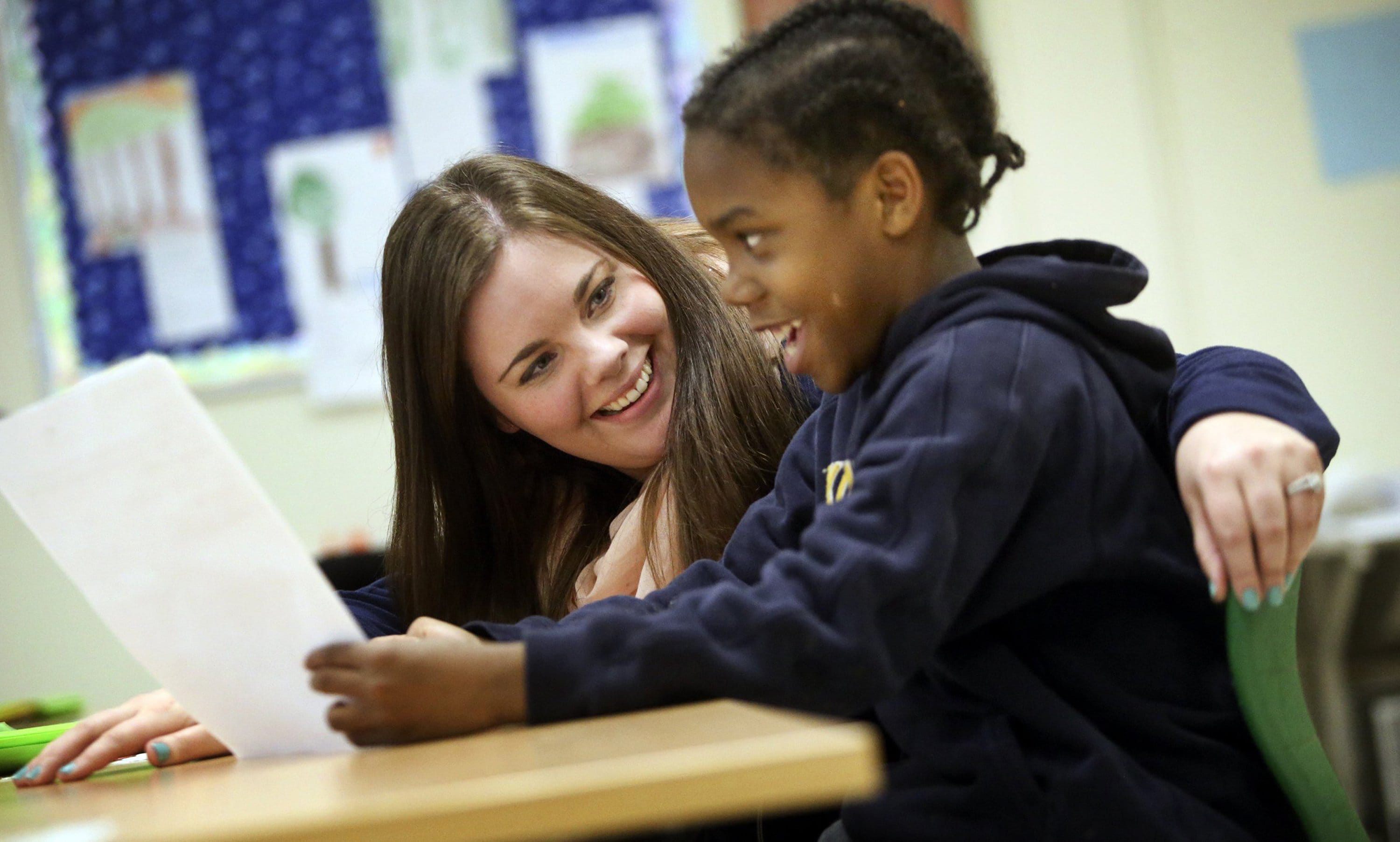MINNEAPOLIS — Over the last four years, Samantha Ovadal has been bitten, hit, kicked and scratched while working as an education assistant at a Maplewood school that serves students with severe emotional and behavioral disorders.
Yet Ovadal loves her job, and dreams of becoming a special education teacher. The only things standing in her way are the time and money it would take to pursue her master’s degree. Most likely, she would have to quit her job, creating another difficult-to-fill classroom vacancy.
But a first-of-its-kind University of Minnesota master’s degree program promises to groom education assistants such as Ovadal into special education teachers by training them on the job in the classrooms where they already work.
The newly approved program is designed in part to help metro area school districts “grow their own” special education teachers who are licensed to work with students who have emotional and behavioral disorders.
In Minnesota, those teachers are in great demand, but also in short supply. The problem is so dire that it often prompts school districts to share those teachers, recruit out of state and, in some instances, place unqualified staff members in the classroom. School districts also have trouble retaining special education teachers.
“The candidates that have been accepted into this program are excellent, and they know exactly what they’re getting into,” said Jennifer McComas, a professor in the University of Minnesota’s Department of Educational Psychology. “They have the experience, the passion, to become excellent teachers.”
So far, Ovadal and about 20 others have applied up for the two-year program, which will begin next fall. Each of the aspiring teachers is an education assistant, or paraprofessional, with a bachelor’s degree and experience working in an EBD classroom.
“For me, this program provides the perfect bridge from where I am to where I want to go,” Ovadal said.
The shortage of special education teachers in Minnesota is both severe and persistent. A yearlong project undertaken by the Star Tribune found there had been a 10 percent decrease in special education teachers between 2008 and 2013, while there had been a 10 percent increase in the student population for the same time period.
Similarly, special education teachers were quitting at a rate faster than new ones were entering the profession.
John Klaber, executive director of the Minnesota Administrators for Special Education, said the departures are often fueled by the amount of paperwork special education teachers are required to complete under both federal and state law. And sometimes aspiring teachers simply aren’t ready to take on the demands associated with some students — kids who might throw a desk across a room or refuse to participate in class.
“Bless the heart of the teachers who deal with the most challenging behavior, the most challenging kids,” he said. “It’s not surprising that they’re going to have their pick of jobs. But schools can’t simply wait around for them to show up at their door and say, ‘I want to work for you.’ “



